Ireland has a long and storied relationship with seaweed. It was historically used for fertiliser, medicine, pottery glaze and food. According to the Heritage Council, there is even a poem dating back to medieval times, which describes monks picking dilisk (see below for more info) from the shore and distributing it to the poor to eat.
Today, seaweed harvesting is done for other things: food, certainly, but also cosmetics, nutraceuticals, and fertilisers. In the face of climate change, it is thought that seaweed can play a key role in reducing emissions and storing carbon. Its potential is growing – and demand is growing along with it.
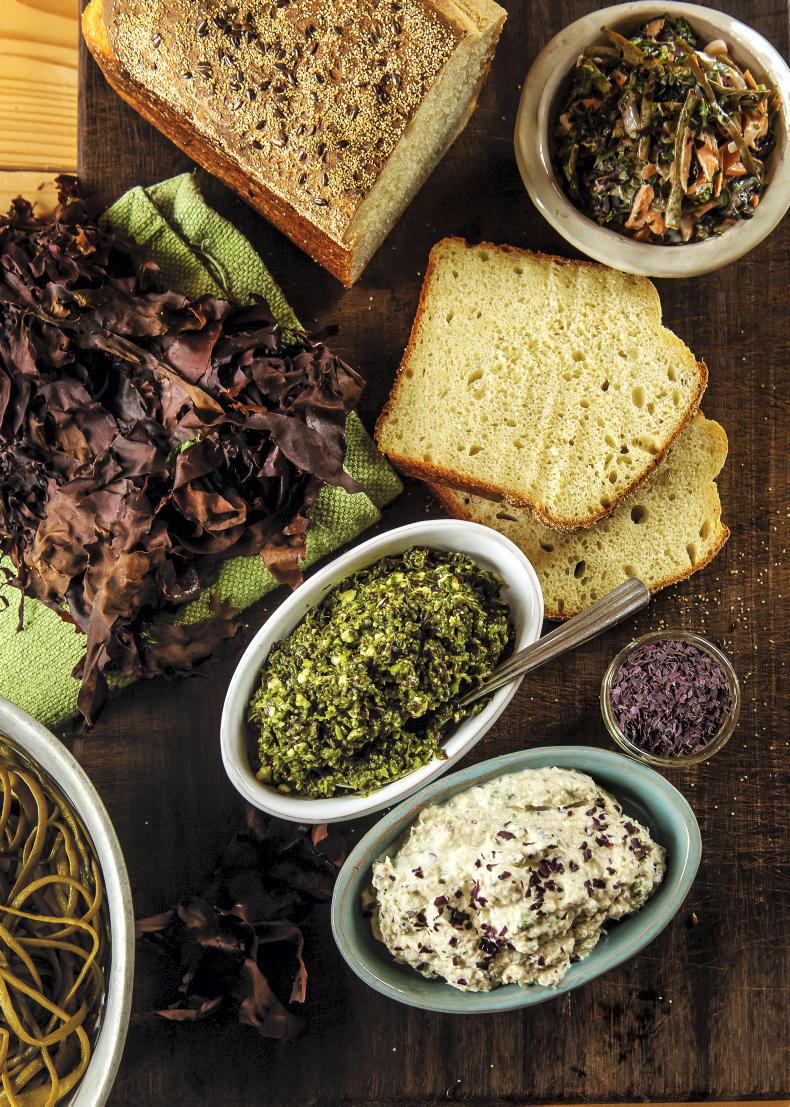
David and Jenny enjoy creating different recipes with their dried seaweed product line. \ Philip Doyle
Bord Bia says approximately 40,000t of seaweed is harvested in Ireland each year, and around 95% is naturally grown. Most seaweed harvesters in Ireland collect wild, uncultivated seaweeds. This is unlike the large, mechanised seaweed aquaculture systems you find, for example, in waters around Asia, where demand for the crop as an ingredient is incredibly high.

David regularly dives to hand pick their seaweed in the waters off Inis Mor. \ Philip Doyle
What would it look like if we increased our havesting capabilities in Ireland? Would it help our oceans, or create more environmental problems? These are some of the things we need to consider, but more research needs to be done to give a better idea of how it could work. Luckily, there are already people working to develop ecologically sound farming and harvesting systems in Ireland.
Bláth na Mara
When you hear the story of how Jenny and David O’Halloran met and developed their seaweed harvesting business, it’s difficult not to buy into the idea of destiny. David, who is originally from New Zealand, has a background in marine biology and aquaculture. He met Jenny 14 years ago, while living and working in west Cork.

Sea Spaghetti floating in the water off Inis Mor. \ Philip Doyle
Jenny’s father, Máirtín, is an Inis Mór native. He started his seaweed harvesting business, Bláth na Mara, in 2002. The Aran Islands has a long tradition of seaweed harvesting and, in past times, the seaweed would be laid out on the stone walls to dry. Máirtín spent 13 years building up the business and then asked Jenny and David, who were by then living in New Zealand with their children, if they would like to come home and work with him.
With David’s knowledge and skillset, the couple decided to make the move. This decision would lead to a highly successful collaboration. Since 2015, Jenny and David have built on Máirtín’s work to develop Bláth na Mara into a multi-faceted business; selling their air-dried, certified organic seaweed worldwide and creating their own unique food product line within Ireland.

Jenny and David O'Halloran outside their restored stone cottage where they host visitor experience days. \ Philip Doyle
Their fully HACCP compliant processing unit has further streamlined their business; enabling them to dry, process and package their seaweed on-site.
“We have a wholesale which is probably half [domestic] and half international – that would be the main part of the business – and then we have our own small retail range which is [mainly] all domestic,” David explains. “Then, we have the seaweed tasting side of the business which is our visitor’s experience.”
The Aran lifestyle
The O’Hallorans have settled into island life quite easily, which they attribute to being surrounded by family and a supportive community. Their children attend the local school and, as Inis Mór is a Gaeltacht region, the whole family have been perfecting their Irish. For David, who loves the water, diving for and harvesting seaweed by hand is a dream job.
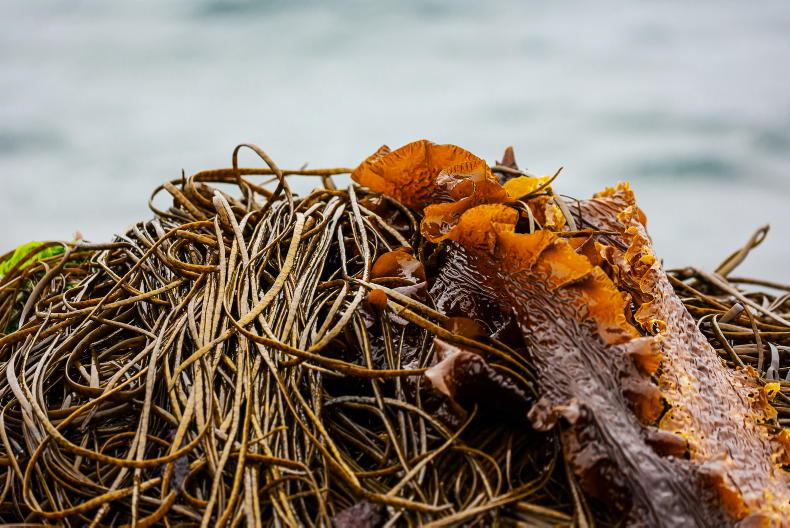
Some of the types of seaweed found in the waters off Inis Mor. \ Philip Doyle
“Some people think we were a bit mad moving out to Aran, but it suits us down to the ground,” he laughs. “We get to spend heaps of time outdoors, heaps of time with family and we love the work we do.”

Blath na Mara product line of dried seaweeds. \ Philip Doyle
The O’Hallorans use seaweed as a vegetable (cooked or raw, in salads), a snack and as a seasoning or garnish. They enjoy creating recipes with the different types of seaweed (namely carageen moss, sea spaghetti, kelp and dulse, among others). The seaweed is packaged dry and can be rehydrated and eaten raw or cooked. Their seamix and dulse flakes are made for sprinkling and seasoning – they work well as flavour enhancers.
Eco-tourism
Their seaweed visitor experience is just starting out, but the O’Hallorans are excited by its potential. They have restored an old stone cottage and plan to host food experience days, using local food producers, crafts and their own seaweeds to give visitors an idea of the local flavour.

David enjoys diving for seaweed and feels priviliged to do this kind of work. \ Philip Doyle
Most recently, Bláth na Mara has launched three new products: Aran Islands Seaweed aioli, mackerel pate and pesto. It aims to make traditional Irish seaweed a pantry staple in the modern Irish household.
“Lots of people want to try seaweed but they maybe don’t know where to begin, or what to use it for,” says Jenny. “We want to make our products accessible and easy to use. Seaweed is so nutritious, it’s a great way to add flavour to any dish and it’s plentiful.”
Minimal footprint
Their seaweed is hand harvested and the O’Hallorans are mindful of their local ecological impact. David spends his days in the water, surrounded by rich sea life – he feels strongly about protecting Ireland’s healthy marine environments and feels particularly responsible for the areas where they harvest.

Blath na Mara. \ Philip Doyle
“We have to care for these areas as they are the same areas we rely on year after year,” he explains. “That being the case, it’s {equally] important that we minimise the impact we make on the shore while harvesting (some seaweeds are harvested at low tide while others are harvesting by diving). The key to our sustainable management plan is to maintain a comprehensive harvest record of what species we have taken, from where, and when.”
Keeping these detailed records helps David and Jenny effectively monitor the areas where they harvest. It is also important to keep these records for future decision and policy making surrounding Irish seaweed, as it is a poorly understood industry – even at a government and European Union level.

Blath na Mara \ Philip Doyle
“Most Irish seaweed operations are small scale,” David says. “I believe there is a pretty well managed, large scale, hand harvested seaweed industry over in Connemara, but the future of large-scale seaweed production seems to be in aquaculture (cultivating and gardening seaweed species) rather than mechanical harvesting of the wild resource.”
Research
Research on large-scale seaweed harvesting is minimal as most large-scale seaweed aquaculture operations are in Asia. In Europe, there is less experience with large-scale seaweed farming. With this in mind, the O’Hallorans (and other seaweed harvesters) volunteer to take part in active studies. Recently, David and Jenny worked with IT Carlow and Aeriel Agritech with a project which used drones to survey their harvesting area topography and estimate seaweed biomass.
“We’re mapping the shore of Aran so we can get seasonal and annual variation on the ecosystem composition and also by incorporating the harvest record we can see what impact (if any) we’re having.
“Our little business is on a mission to bring seaweed to people’s tables as a tasty, nourishing addition to meals,” he continues. “The growth of the seaweed industry on a larger scale can have heaps of benefits – both for the environment and for employment in coastal communities. The true success of the industry, [I think], will be through innovative processing; creating sought-after products post-harvest.”
The Marine Institute
On behalf of the Government, the Marine Institute is currently overseeing two research projects under the EU European Maritime & Fisheries Fund (EMFF), aimed at developing a better understanding of seaweed resources around the Irish coastline.
The first project is the aforementioned research being conducted by drone, with which the O’Hallorans are involved.
“Conventional ground surveys to estimate seaweed biomass are time-consuming, expensive and sometimes dangerous due to inaccessible terrain,” says Caitríona Nic Aonghusa, the Marine Institute’s main point of contact for EMFF schemes. “Researchers are investigating the use of satellite data, drone or light aircraft fitted with specialised cameras to improve our understanding of Ireland’s intertidal seaweeds.
“The second project is a socioeconomic study of seaweed harvesting in Ireland,” she continues. “It will develop a better understanding of where seaweed harvesting activity is happening and what the resource usage is. It will provide a better understanding of the true potential value of seaweed harvesting.”

Blath na Mara. \ Philip Doyle
Caitríona further explains that this project is being conducted by a group of researchers based around the Munster Technological University and is due to finish this coming December. The project outputs will be used to inform future seaweed harvesting policies as part of the National Marine Planning Framework (NMPF), which was published this past July by the Department of Housing, Local Government and Heritage (DHLGH).

Blath na Mara. \ Philip Doyle
“This project is an important background study for the NMPF,” she says. “It’s a baseline study to assess seaweed harvesting activity and how the product is used. It is responding to an identified knowledge gap, and the research group wants to improve this knowledge. At the moment, they’re conducting surveys of seaweed harvesters [like Bláth na Mara]. The advice will be used by DHLGH for forward planning and balanced decision making.”
Rural coastal development
The sustainable growth of our seaweed industry is not only vital for the environment and economic success – Caitríona also stresses the importance it can have on rural development.
“Seaweed harvesting is an intrinsic part of coastal communities in the west of Ireland,” she says. “It’s an important activity that can be traced back hundreds of years. It’s important to understand the value and heritage of it on a small scale. When things are small scale, it’s hard to gather that kind of data (and if there are seaweed-harvesting readers interested, we’d be delighted to invite them to a workshop in October to hear their views talk to them). Looking at the potential for seaweed – if it’s sustainably managed – there’s huge value there as a resource for Ireland.”
Caitríona says information gathered from this study will be made available to the public, once completed.
Nutritious, delicious seaweed
There are over 500 different species of seaweed found in Ireland, but only a few are harvested. Here are some of the more commonly consumed species you might come across on your next coastal walk:
1 Kelp
Kelp is found throughout the world but there are 30 different varieties. It can be prepared as any other vegetable or simmered to make soup broth (like Japanese-style dashi). It grows in underwater forests and plays an important ecological role in marine environments.
2 Dilisk
Also known as dulse, dilisk is a highly nutritious and tasty type of seaweed found around the Northern hemisphere. It is reddish-purple in colour. It grows by attaching itself to other things, like rocks. You’ll often find it sold dried for snacking, like crisps – only much healthier!
3 Sea spaghetti
Also known as fucales, sea spaghetti’s name offers an indication of what it might look like. These long, thin strands of seaweed are found in the Northeastern Atlantic and North Sea regions. They are used for food – eaten sautéed, pickled, steamed or simply raw (David and Jenny make a delicious sea spaghetti coleslaw).
4 Carrageen Moss
There’s a well-known television ad from Janine’s childhood in Eastern Canada – some city kids come to visit their grandparents on the East Coast and ask what’s for dessert. “Seaweed pie,” replies the grumpy-sounding grandfather (much to the shock and horror of the children). It doesn’t sound appetising, but custard-like pies and tarts, thickened with carrageen moss (which has been used on both side of the Atlantic for generations as a setting agent) are actually divine.
Read more
Murky waters
Farming a naturally occurring process: Blackshell Farm rope grown mussels
Ireland has a long and storied relationship with seaweed. It was historically used for fertiliser, medicine, pottery glaze and food. According to the Heritage Council, there is even a poem dating back to medieval times, which describes monks picking dilisk (see below for more info) from the shore and distributing it to the poor to eat.
Today, seaweed harvesting is done for other things: food, certainly, but also cosmetics, nutraceuticals, and fertilisers. In the face of climate change, it is thought that seaweed can play a key role in reducing emissions and storing carbon. Its potential is growing – and demand is growing along with it.

David and Jenny enjoy creating different recipes with their dried seaweed product line. \ Philip Doyle
Bord Bia says approximately 40,000t of seaweed is harvested in Ireland each year, and around 95% is naturally grown. Most seaweed harvesters in Ireland collect wild, uncultivated seaweeds. This is unlike the large, mechanised seaweed aquaculture systems you find, for example, in waters around Asia, where demand for the crop as an ingredient is incredibly high.

David regularly dives to hand pick their seaweed in the waters off Inis Mor. \ Philip Doyle
What would it look like if we increased our havesting capabilities in Ireland? Would it help our oceans, or create more environmental problems? These are some of the things we need to consider, but more research needs to be done to give a better idea of how it could work. Luckily, there are already people working to develop ecologically sound farming and harvesting systems in Ireland.
Bláth na Mara
When you hear the story of how Jenny and David O’Halloran met and developed their seaweed harvesting business, it’s difficult not to buy into the idea of destiny. David, who is originally from New Zealand, has a background in marine biology and aquaculture. He met Jenny 14 years ago, while living and working in west Cork.

Sea Spaghetti floating in the water off Inis Mor. \ Philip Doyle
Jenny’s father, Máirtín, is an Inis Mór native. He started his seaweed harvesting business, Bláth na Mara, in 2002. The Aran Islands has a long tradition of seaweed harvesting and, in past times, the seaweed would be laid out on the stone walls to dry. Máirtín spent 13 years building up the business and then asked Jenny and David, who were by then living in New Zealand with their children, if they would like to come home and work with him.
With David’s knowledge and skillset, the couple decided to make the move. This decision would lead to a highly successful collaboration. Since 2015, Jenny and David have built on Máirtín’s work to develop Bláth na Mara into a multi-faceted business; selling their air-dried, certified organic seaweed worldwide and creating their own unique food product line within Ireland.

Jenny and David O'Halloran outside their restored stone cottage where they host visitor experience days. \ Philip Doyle
Their fully HACCP compliant processing unit has further streamlined their business; enabling them to dry, process and package their seaweed on-site.
“We have a wholesale which is probably half [domestic] and half international – that would be the main part of the business – and then we have our own small retail range which is [mainly] all domestic,” David explains. “Then, we have the seaweed tasting side of the business which is our visitor’s experience.”
The Aran lifestyle
The O’Hallorans have settled into island life quite easily, which they attribute to being surrounded by family and a supportive community. Their children attend the local school and, as Inis Mór is a Gaeltacht region, the whole family have been perfecting their Irish. For David, who loves the water, diving for and harvesting seaweed by hand is a dream job.

Some of the types of seaweed found in the waters off Inis Mor. \ Philip Doyle
“Some people think we were a bit mad moving out to Aran, but it suits us down to the ground,” he laughs. “We get to spend heaps of time outdoors, heaps of time with family and we love the work we do.”

Blath na Mara product line of dried seaweeds. \ Philip Doyle
The O’Hallorans use seaweed as a vegetable (cooked or raw, in salads), a snack and as a seasoning or garnish. They enjoy creating recipes with the different types of seaweed (namely carageen moss, sea spaghetti, kelp and dulse, among others). The seaweed is packaged dry and can be rehydrated and eaten raw or cooked. Their seamix and dulse flakes are made for sprinkling and seasoning – they work well as flavour enhancers.
Eco-tourism
Their seaweed visitor experience is just starting out, but the O’Hallorans are excited by its potential. They have restored an old stone cottage and plan to host food experience days, using local food producers, crafts and their own seaweeds to give visitors an idea of the local flavour.

David enjoys diving for seaweed and feels priviliged to do this kind of work. \ Philip Doyle
Most recently, Bláth na Mara has launched three new products: Aran Islands Seaweed aioli, mackerel pate and pesto. It aims to make traditional Irish seaweed a pantry staple in the modern Irish household.
“Lots of people want to try seaweed but they maybe don’t know where to begin, or what to use it for,” says Jenny. “We want to make our products accessible and easy to use. Seaweed is so nutritious, it’s a great way to add flavour to any dish and it’s plentiful.”
Minimal footprint
Their seaweed is hand harvested and the O’Hallorans are mindful of their local ecological impact. David spends his days in the water, surrounded by rich sea life – he feels strongly about protecting Ireland’s healthy marine environments and feels particularly responsible for the areas where they harvest.

Blath na Mara. \ Philip Doyle
“We have to care for these areas as they are the same areas we rely on year after year,” he explains. “That being the case, it’s {equally] important that we minimise the impact we make on the shore while harvesting (some seaweeds are harvested at low tide while others are harvesting by diving). The key to our sustainable management plan is to maintain a comprehensive harvest record of what species we have taken, from where, and when.”
Keeping these detailed records helps David and Jenny effectively monitor the areas where they harvest. It is also important to keep these records for future decision and policy making surrounding Irish seaweed, as it is a poorly understood industry – even at a government and European Union level.

Blath na Mara \ Philip Doyle
“Most Irish seaweed operations are small scale,” David says. “I believe there is a pretty well managed, large scale, hand harvested seaweed industry over in Connemara, but the future of large-scale seaweed production seems to be in aquaculture (cultivating and gardening seaweed species) rather than mechanical harvesting of the wild resource.”
Research
Research on large-scale seaweed harvesting is minimal as most large-scale seaweed aquaculture operations are in Asia. In Europe, there is less experience with large-scale seaweed farming. With this in mind, the O’Hallorans (and other seaweed harvesters) volunteer to take part in active studies. Recently, David and Jenny worked with IT Carlow and Aeriel Agritech with a project which used drones to survey their harvesting area topography and estimate seaweed biomass.
“We’re mapping the shore of Aran so we can get seasonal and annual variation on the ecosystem composition and also by incorporating the harvest record we can see what impact (if any) we’re having.
“Our little business is on a mission to bring seaweed to people’s tables as a tasty, nourishing addition to meals,” he continues. “The growth of the seaweed industry on a larger scale can have heaps of benefits – both for the environment and for employment in coastal communities. The true success of the industry, [I think], will be through innovative processing; creating sought-after products post-harvest.”
The Marine Institute
On behalf of the Government, the Marine Institute is currently overseeing two research projects under the EU European Maritime & Fisheries Fund (EMFF), aimed at developing a better understanding of seaweed resources around the Irish coastline.
The first project is the aforementioned research being conducted by drone, with which the O’Hallorans are involved.
“Conventional ground surveys to estimate seaweed biomass are time-consuming, expensive and sometimes dangerous due to inaccessible terrain,” says Caitríona Nic Aonghusa, the Marine Institute’s main point of contact for EMFF schemes. “Researchers are investigating the use of satellite data, drone or light aircraft fitted with specialised cameras to improve our understanding of Ireland’s intertidal seaweeds.
“The second project is a socioeconomic study of seaweed harvesting in Ireland,” she continues. “It will develop a better understanding of where seaweed harvesting activity is happening and what the resource usage is. It will provide a better understanding of the true potential value of seaweed harvesting.”

Blath na Mara. \ Philip Doyle
Caitríona further explains that this project is being conducted by a group of researchers based around the Munster Technological University and is due to finish this coming December. The project outputs will be used to inform future seaweed harvesting policies as part of the National Marine Planning Framework (NMPF), which was published this past July by the Department of Housing, Local Government and Heritage (DHLGH).

Blath na Mara. \ Philip Doyle
“This project is an important background study for the NMPF,” she says. “It’s a baseline study to assess seaweed harvesting activity and how the product is used. It is responding to an identified knowledge gap, and the research group wants to improve this knowledge. At the moment, they’re conducting surveys of seaweed harvesters [like Bláth na Mara]. The advice will be used by DHLGH for forward planning and balanced decision making.”
Rural coastal development
The sustainable growth of our seaweed industry is not only vital for the environment and economic success – Caitríona also stresses the importance it can have on rural development.
“Seaweed harvesting is an intrinsic part of coastal communities in the west of Ireland,” she says. “It’s an important activity that can be traced back hundreds of years. It’s important to understand the value and heritage of it on a small scale. When things are small scale, it’s hard to gather that kind of data (and if there are seaweed-harvesting readers interested, we’d be delighted to invite them to a workshop in October to hear their views talk to them). Looking at the potential for seaweed – if it’s sustainably managed – there’s huge value there as a resource for Ireland.”
Caitríona says information gathered from this study will be made available to the public, once completed.
Nutritious, delicious seaweed
There are over 500 different species of seaweed found in Ireland, but only a few are harvested. Here are some of the more commonly consumed species you might come across on your next coastal walk:
1 Kelp
Kelp is found throughout the world but there are 30 different varieties. It can be prepared as any other vegetable or simmered to make soup broth (like Japanese-style dashi). It grows in underwater forests and plays an important ecological role in marine environments.
2 Dilisk
Also known as dulse, dilisk is a highly nutritious and tasty type of seaweed found around the Northern hemisphere. It is reddish-purple in colour. It grows by attaching itself to other things, like rocks. You’ll often find it sold dried for snacking, like crisps – only much healthier!
3 Sea spaghetti
Also known as fucales, sea spaghetti’s name offers an indication of what it might look like. These long, thin strands of seaweed are found in the Northeastern Atlantic and North Sea regions. They are used for food – eaten sautéed, pickled, steamed or simply raw (David and Jenny make a delicious sea spaghetti coleslaw).
4 Carrageen Moss
There’s a well-known television ad from Janine’s childhood in Eastern Canada – some city kids come to visit their grandparents on the East Coast and ask what’s for dessert. “Seaweed pie,” replies the grumpy-sounding grandfather (much to the shock and horror of the children). It doesn’t sound appetising, but custard-like pies and tarts, thickened with carrageen moss (which has been used on both side of the Atlantic for generations as a setting agent) are actually divine.
Read more
Murky waters
Farming a naturally occurring process: Blackshell Farm rope grown mussels
















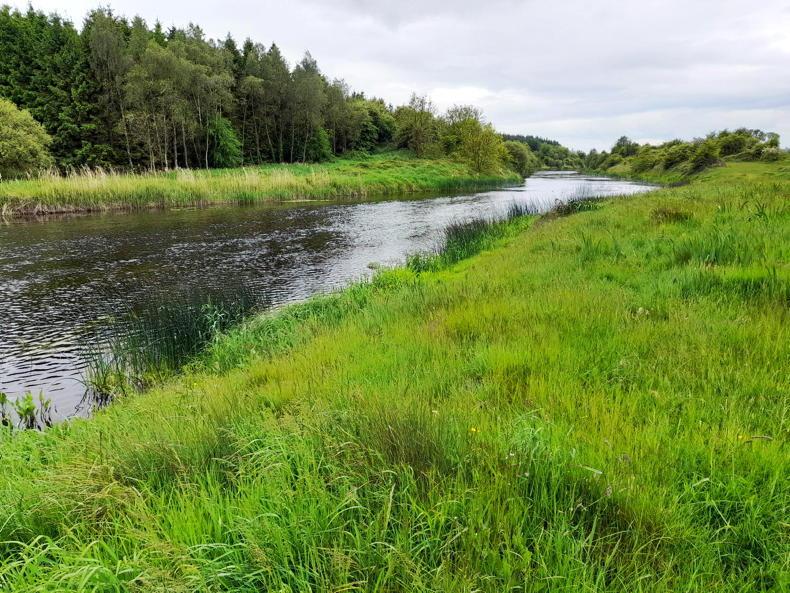

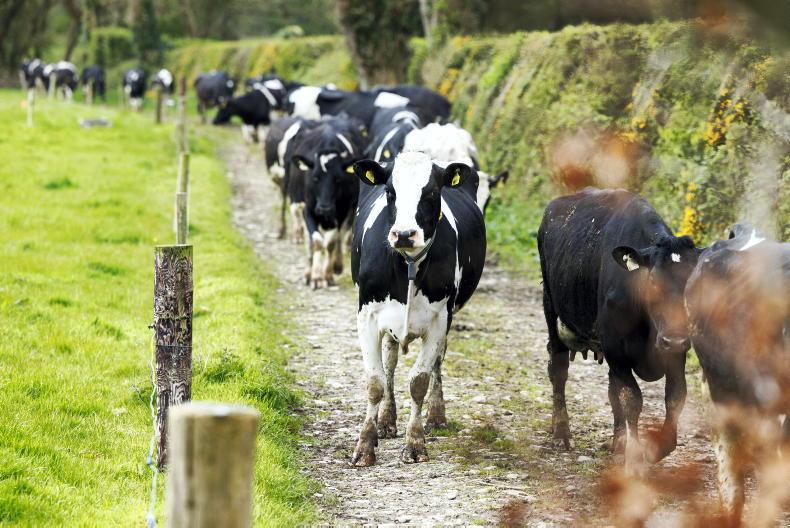
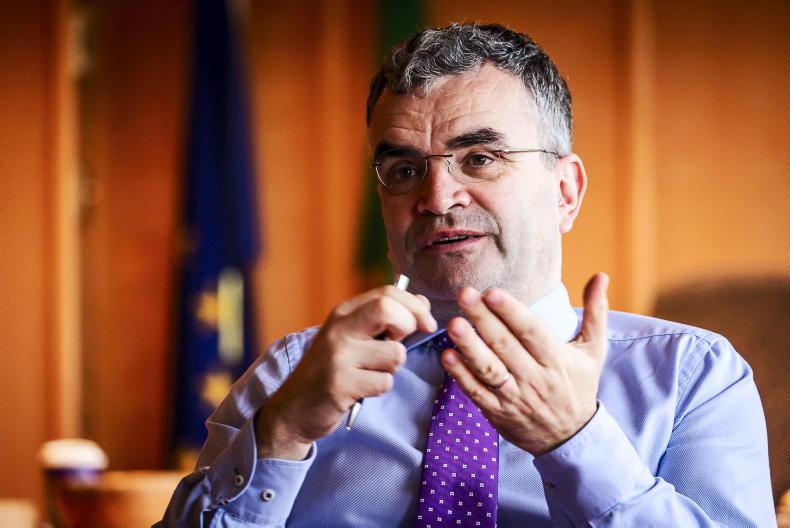

SHARING OPTIONS